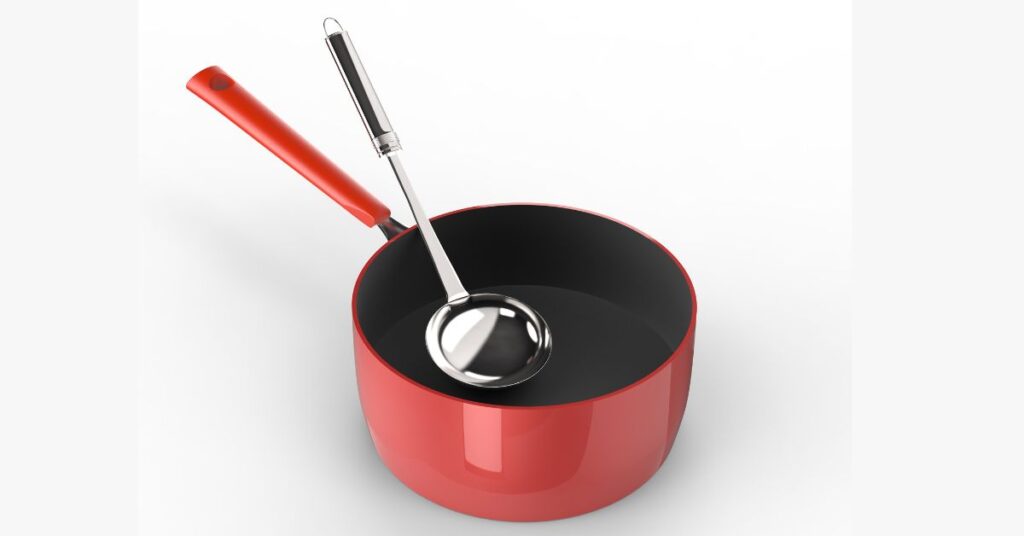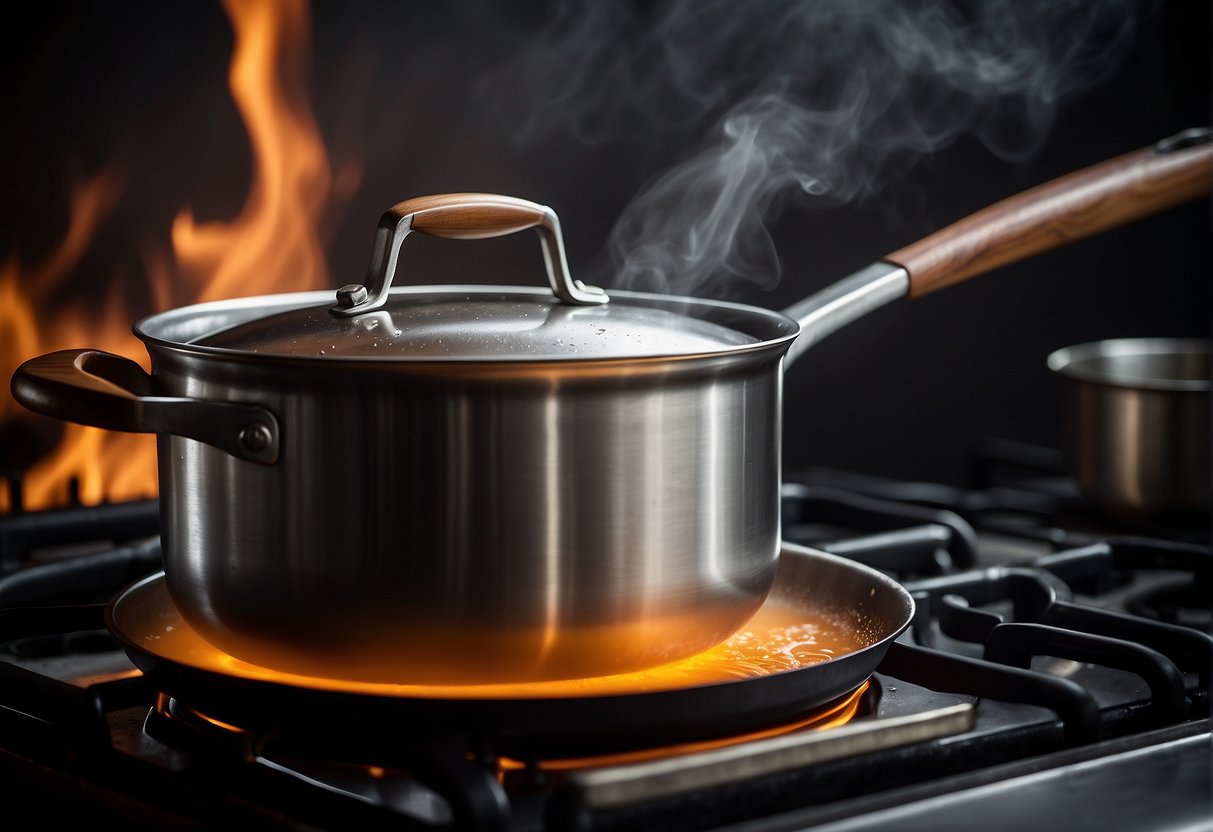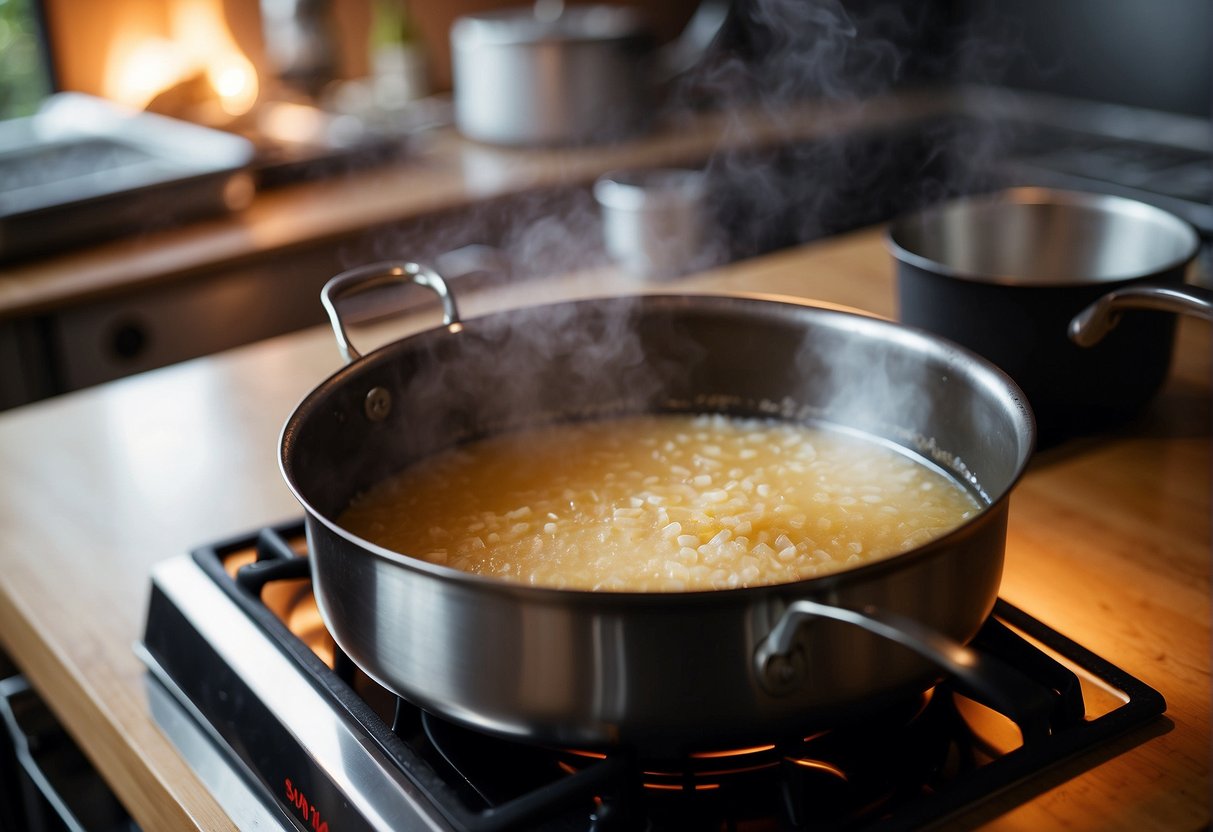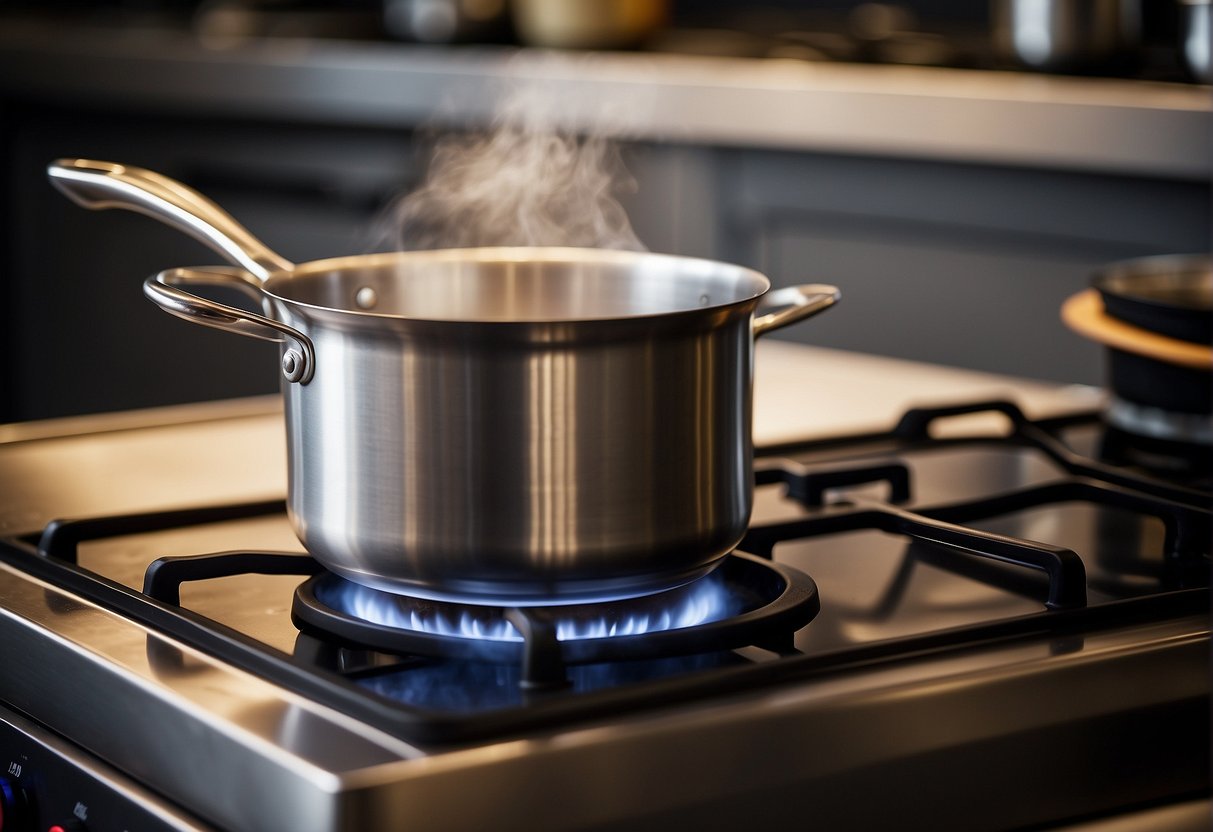A heavy-bottomed saucepan is a versatile kitchen tool valued for its thick base, which helps distribute heat evenly and prevents food from burning. This type of pan stands out from its lighter counterparts due to its construction, typically featuring materials like stainless steel or cast iron that contribute to its weight and heat retention properties. Whether you’re simmering sauces, cooking grains, or braising meats, a heavy-bottomed saucepan can offer more control over the cooking process.

Understanding how to effectively use and care for your heavy-bottomed saucepan is essential for any home cook. Investing in this kitchen staple not only improves the quality of your dishes but also ensures long-term durability. Regular maintenance, including proper cleaning and occasional seasoning for certain materials, like cast iron, will keep your saucepan in prime condition. While it can be a bit heavier to handle, the culinary benefits of this cookware make it a valuable addition to your kitchen arsenal.
Key Takeaways
- A heavy-bottomed saucepan provides even heat distribution and prevents food from burning.
- Proper use and maintenance of the saucepan enhances cooking results and extends its lifespan.
- Investing in a heavy-bottomed saucepan is beneficial for a wide range of cooking applications.
Definition and Purpose

When you’re cooking, using the right equipment is essential. A heavy bottomed saucepan is a key tool in your kitchen for a variety of tasks.
Material Significance
The “heavy bottomed” aspect of these saucepans refers to an extra layer of material, often made of materials like aluminum or copper, attached to the bottom of the pan. This thick base serves several important functions:
- Even Heat Conduction: The extra material helps cook food evenly, reducing hotspots.
- Prevention of Scorching: Thicker materials mitigate the likelihood of burning delicate ingredients.
- Retaining Heat: A heavy base holds heat better, keeping your food at the desired temperature for a longer period.
Heat Distribution Features
A heavy bottomed saucepan is specially designed to enhance your cooking experience by efficiently managing heat distribution. Here’s how:
- Thermal Conductivity:
- Aluminum: High thermal conductivity for quick heating.
- Copper: Even higher conductivity, often found in high-end cookware.
- Heat Retention:
- Ensures gradual cooling, ideal for sauces and simmering.
- Compatibility:
- Suitable for most heat sources, including induction cooktops.
- Versatile for a range of cooking techniques.
Common Uses in Cooking

A heavy-bottomed saucepan is your reliable partner for a variety of cooking tasks that require consistent heat distribution to prevent scorching and to cook your food evenly.
Sauces and Reductions
- When making sauces or reductions, the thick base of a heavy-bottomed saucepan is crucial. It minimizes the risk of burning, which can be a concern with thinner pans.
- Example sauces include:
- Béchamel: A white sauce made from butter, flour, and milk.
- Marinara: A tomato-based sauce, simmered to enhance flavor.
Slow Cooking and Simmering
- For slow cooking techniques, such as braising, the saucepan allows for low and slow simmering without hot spots, which is essential for tender and flavorful dishes.
- Simmering foods like grains or legumes benefit greatly:
- Rice: Achieve perfectly cooked grains that are fluffy and not mushy.
- Beans: Beans cook evenly without breaking down or sticking to the bottom.
Care and Maintenance

Proper care and maintenance of your heavy-bottomed saucepan will ensure its longevity and optimal performance during cooking.
Cleaning Guidelines
- Hand-Washing: To maintain the integrity of your saucepan, always hand-wash it using warm water and a mild detergent. Avoid using abrasive scrubbers, which can scratch the surface. Instead, opt for a soft sponge or cloth.
1. Rinse saucepan to remove loose food particles.
2. Fill with warm, soapy water; let soak if necessary.
3. Gently scrub with a non-abrasive sponge.
4. Rinse thoroughly with clean water.
5. Dry immediately with a soft towel to prevent water spots.
- Dishwasher Use: If your saucepan is dishwasher-safe, place it on the bottom rack, handle facing down. However, frequent dishwasher use may affect the pan’s finish over time.
Longevity Tips
- Temperature Changes: Avoid sudden temperature changes, such as moving your pan from the refrigerator directly to the stove, as this can cause warping.
- Storage: Store your saucepan in a dry place and, if stacking pans, place a protective liner between them to prevent scratches.
- Utensils: Use wooden or silicone utensils to protect the cooking surface from scratches. Avoid metal utensils which can be harsh on the saucepan’s surface.
- Seasoning: If your saucepan is made of cast iron or another material that benefits from seasoning, re-season it periodically to maintain a non-stick surface and protect against rust.
1. Clean the pan and dry it thoroughly.
2. Apply a thin layer of cooking oil to the surface.
3. Heat the pan in the oven or on the stove to seal the oil.
4. Allow it to cool and wipe away any excess oil.
Frequently Asked Questions

In this section, you’ll find answers to common questions about heavy bottomed saucepans to help you make the most of your kitchen equipment.
What are the benefits of using a heavy bottomed saucepan in cooking?
A heavy bottomed saucepan distributes heat more evenly, reducing the risk of scorching and sticking. This makes it ideal for cooking tasks that require precise temperature control, like simmering sauces.
How does a heavy bottomed saucepan contribute to making candy?
When making candy, you need consistent, even heat to prevent sugars from burning. A heavy bottomed saucepan provides this even heat, crucial for achieving the perfect texture and consistency in candy-making.
What distinguishes the best heavy bottom saucepans from other types?
The best heavy bottom saucepans are typically made of quality materials like stainless steel with a thick base that includes layers of aluminum or copper. This construction ensures optimal heat retention and distribution.
Can a cast iron pan be classified as a heavy bottom saucepan, and why?
Yes, a cast iron pan can be classified as a heavy bottom saucepan because it has a thick base that holds and distributes heat well, which is characteristic of heavy bottom saucepans.
Why might one prefer heavy pans over lighter options for certain recipes?
Heavy pans are preferred for recipes that require steady, low-to-medium heat over long periods, like braising or slow-cooking stews, as they maintain temperature without hot spots.
What size is typically considered a large saucepan and what are its uses?
A large saucepan is typically around 4 to 6 quarts and is versatile for boiling pasta, making large batches of soup, or cooking grains in bulk.
